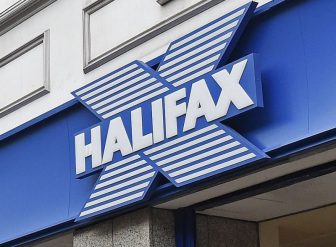 The average house price fell by 1.5% in December, with the typical UK property now costing £281,272, down from £285,425 a month earlier, new data released this morning shows.
The average house price fell by 1.5% in December, with the typical UK property now costing £281,272, down from £285,425 a month earlier, new data released this morning shows.
Prices were also down 2.5% on a quarterly basis, while the annual rate of growth has fallen, but remains 2% higher than this time last year.
The rate of annual growth slowed in all nations and regions during December, according to the Halifax House Price Index hits 40-year anniversary, with house prices up 974% since early 1983
Kim Kinnaird, Director, Halifax Mortgages, said: “In December, the cost of the average UK home was £281,272, a fall on the previous month of 1.5%, with annual growth slowing to +2% (from +4.6%). However, the fall in December was lower than the monthly decline of 2.4% recorded in November, even taking into account seasonal slowdown driven by the festive period.
“As we’ve seen over the past few months, uncertainties about the extent to which cost of living increases will impact household bills, alongside rising interest rates, is leading to an overall slowing of the market.
“The housing market was a mixed picture in 2022. We saw rapid house price growth during the first six months, followed by a plateau in the summer before prices began to fall from September, as the impact of cost-of-living pressures, coupled with a rising rates environment, began to take effect on household finances and demand.
“These trends need to be viewed in the context of historic prices. The cost of the average home remains high – greater than it was at the start of 2022 and over 11% more than house prices at the beginning of 2021. The first half of last year was a very strong period for sellers, between January 2022 and August 2022, the average cost of a home rose by over £17,000 to £293,992 (growth of 6%), setting a new record high.
“As we enter 2023, the housing market will continue to be impacted by the wider economic environment and, as buyers and sellers remain cautious, we expect there will be a reduction in both supply and demand overall, with house prices forecast to fall around 8% over the course of the year. It’s important to recognise that a drop of 8% would mean the cost of the average property returning to April 2021 prices, which still remains significantly above pre-pandemic levels.”
Nations and regions house prices
All nations and regions saw annual house price inflation, although the rate of growth has slowed.
On an annual basis, the North East saw the greatest slowdown in growth, with annual house prices rising by 6.5%, compared to 10.5% the prior month. Average house prices in the region are now £169,980.
Eastern England, West Midlands and Wales experienced the smallest falls in growth rate. Those buying in the East of England will now pay an average £337,215 (growth rate +5.5% vs +7.2% in November), while in the West Midlands average properties now cost £250,965 (growth rate +7.3% vs +9.1% in November).
The average home in Wales is now £217,547, with annual growth now +6.1% (down from +7.7% the prior month).
Those buying in Scotland will find an average home now costs £200,166, with the second greatest slowdown in the annual growth in the UK, now +3.5% (from +6.4% last month).
Properties in Northern Ireland are up +7.1% year-on-year, lower than the +9.1% last month, with average homes now costing £183,825.
The cost of an average home in London in December was £541,239, a growth of +2.9% annually, compared to 5% last month.
Reflecting on the data, Nathan Emerson, chief executive of Propertymark, said: “As we move into 2023, buyers and sellers are well placed to take advantage of the ongoing positive shift in a more sensible market.
“Buyers are entering a less competitive market with competition dropping by over a third, which works well in their favour, but for sellers, house prices are still approximately 6 per cent higher than this time last year, meaning they will see a comfortable gain when looking to move.”
Tom Bill, head of UK residential research at Knight Frank, said: “The first rule for anyone predicting the trajectory of house prices in 2023 should be to ignore any data from the chaotic final quarter of 2022. The latest data shows two things are happening at the same time. First, the effect of the mini-Budget is working its way through the system, which means that monthly declines are narrowing.
“At the same time, an annual fall in house prices appears imminent, underlining how the lending landscape has changed irrespective of the mini-Budget. As rates normalise, buyers will increasingly recalculate their financial position and house prices will come under pressure. We expect a 10% decline over the next two years, taking them back to where they were in mid-2021.”
But with increasing mortgage rates adding to the cost of living squeeze, they are no longer acting with the same degree of over-exuberance and this is dampening the house price highs seen throughout much of the pandemic.
However, what we’re currently seeing is an extremely over-inflated market retract, rather than collapse. So while there may still be a period of correction to come, the overarching expectation is that stability will return sooner, rather than later.”
James Forrester, MD of Barrows and Forrester, added: “As it stands, we’re witnessing a period of adjustment as buyers reassess their purchasing power and sellers come to terms with what their home can fetch in current market conditions.
For those hoping to sell, there remains a strong level of buyers within the market who are still willing to pay a good price. However, a level headed approach when valuing your home is key if you wish to attract them.”


Comments are closed.